Finding the perfect projector screen is essential for anyone looking to get the most out of their projector setup. It's not just about size or price; it's also about matching the screen to your specific needs — whether that's movies, gaming, or presentations.
Each type of screen has its strengths, from handling ambient light to delivering crisp images in dark rooms. Knowing what works best in your space can transform your viewing into an experience rather than just watching. Let's explore how to choose the right projector screen, focusing on what really matters for your setup.
Reflective Screens vs. ALR
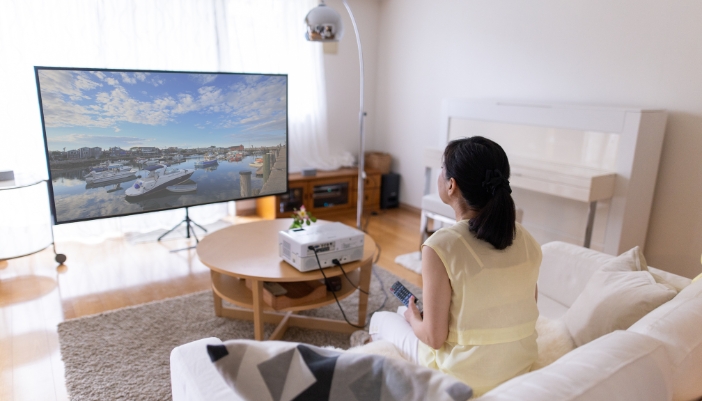
There are several projector screens out there, but the first thing to consider is the leading two contenders: reflective screens and ambient light rejecting (ALR) screens. And they both come with pros and cons!
- Reflective screens bounce the projector’s light directly back to the audience, creating vibrant, clear images. These work best in completely dark rooms like cinema-like home theaters.
- ALR screens reject all ambient light from sources other than the projector, which means you can use them in bright rooms like open living rooms or office spaces. However, these are usually more expensive.
Fixed vs. Retractable
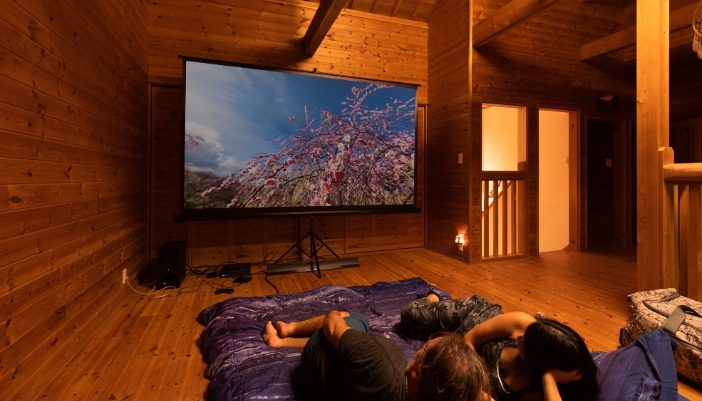
It’s not just the lighting of your space you have to consider; you also have to think about whether you need your projector screen fixed or retractable!
- Fixed Screens: These are mounted in a single spot and provide a constant, tensioned surface, ensuring the image stays smooth and wrinkle-free. This option is best for dedicated home theaters or entertainment areas where a permanent screen won't disrupt the room's functionality.
- Retractable Screens: Perfect for multipurpose rooms, retractable screens can be manually hidden away when not in use. This feature keeps your space versatile, allowing it to quickly switch from an entertainment area to a living room or workspace without the screen being a visual distraction.
Pro Tip:
You can also look into automatically retractable screens that pull up or down at the press of a button!
White vs. Gray
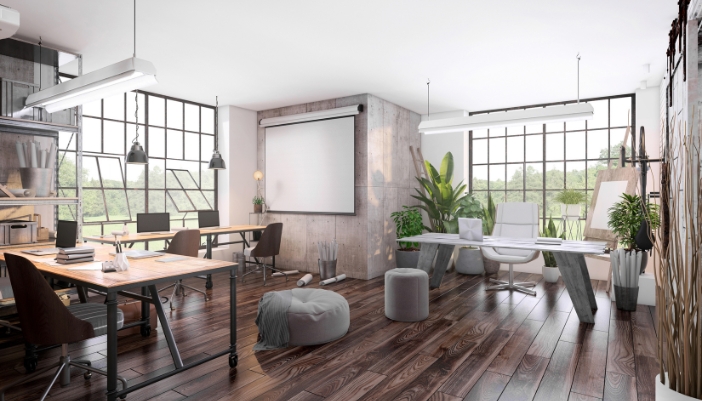
You might not think it, but the color of your projector screen is another primary consideration — it can significantly impact your viewing experience. When it comes to brightness and contrast, the different colors offer unique benefits!
- White Screens excel in dark rooms, providing a bright canvas that makes colors pop. They're ideal for dedicated home theaters or any space where you can achieve near-total darkness, enhancing the vibrancy and clarity of the images.
- Gray Screens help improve contrast and black levels. They mitigate the washing out of the image that can occur in brighter environments, making gray screens suitable for living rooms or spaces with natural light.
Specialized Screens
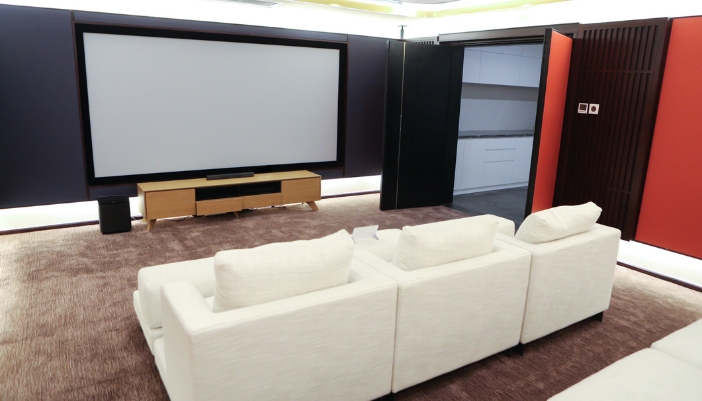
Did you know that there are specialized projector screens designed to enhance specific aspects of your viewing experience? These go beyond the basic types, so if you have a unique viewing setup, you don’t have to settle for a just-average picture!
- High-Contrast Screens: These screens are engineered to improve the projector's contrast ratio, making blacks deeper and colors more vivid. They help create vivid images in slightly lit rooms!
- Acoustically Transparent Screens: If sound quality is as important to you as image quality, these screens are the answer. Designed to let sound pass through without distortion, they're ideal for home theaters where speakers are placed behind the screen, creating an immersive audio-visual experience without compromising audio clarity.
- Rear Projection Screens: Unlike traditional setups where the projector is in front of or above the audience, rear projection screens allow the projector to be placed behind the screen. This setup is great for venues where space in front of the screen is needed, like presentations or performances, reducing shadows and interruptions.
Screening Your Type
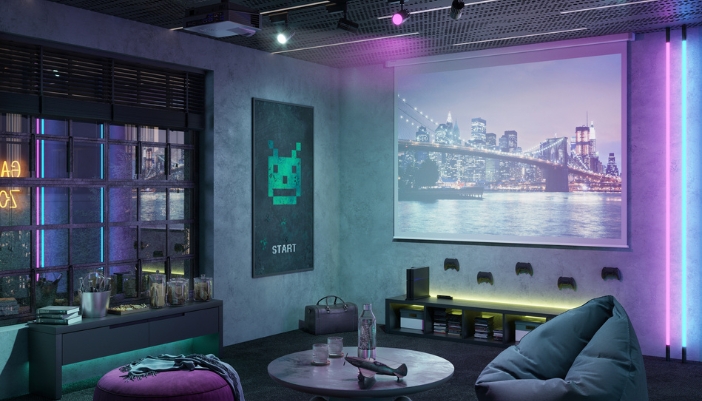
As you can see, there’s more to a projector screen than meets the eye. So, how do you pick the best one to get the most out of your projector and image quality? With a little help!
- Projector Brightness to Screen Gain:
- For projectors with lower brightness (under 2,000 lumens), a higher gain screen (around 1.3 to 1.5) can help amplify the projected image in environments with some ambient light, making the picture more vivid.
- Projectors in the mid-range brightness (2,000 to 3,000 lumens) pair well with screens of gain 1.0 to 1.2, balancing brightness and viewing angle for mixed-use environments.
- High-brightness projectors (over 3,000 lumens) often work best with lower gain screens (0.8 to 1.0), as they provide sufficient luminosity, allowing for broader viewing angles and more flexible seating without sacrificing image quality.
- Matching Use Case with Screen Type:
- Home cinemas focusing on movies and high-dynamic-range (HDR) content benefit from high-contrast screens, enhancing deep blacks and vibrant colors.
- For gamers, keeping visuals is essential, so gray screens are ideal. However, if you need your sound to accompany your gaming, then acoustically transparent screens will do the job!
- Presentations and educational settings can utilize matte white screens with a gain of around 1.0 to ensure clear visibility for text and graphics under varied lighting conditions.
Finding the best projector screen for your home projector can be tricky. But hopefully, with these tips, you’ll have a better idea of what you need! But if you have any trouble, our experts at Russell’s Appliance & Electronics are always happy to lend a hand! Call or pop in, and we’ll help you with the best setup that suits your home!